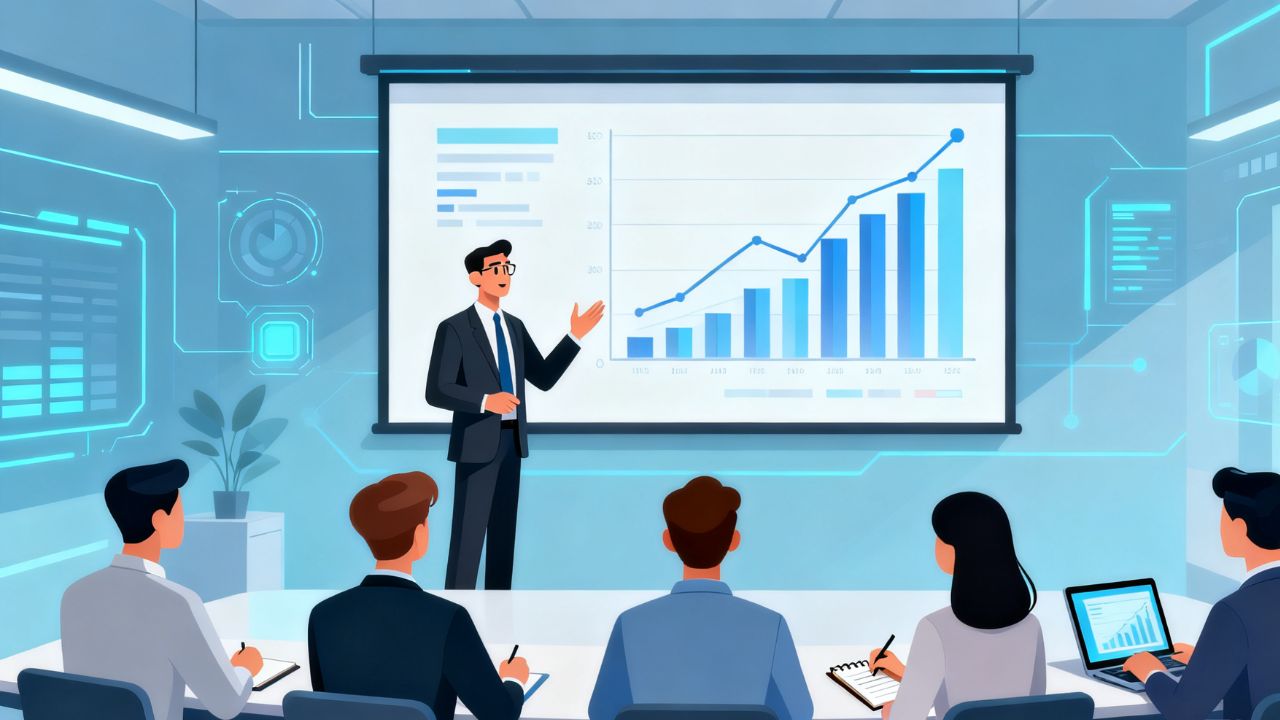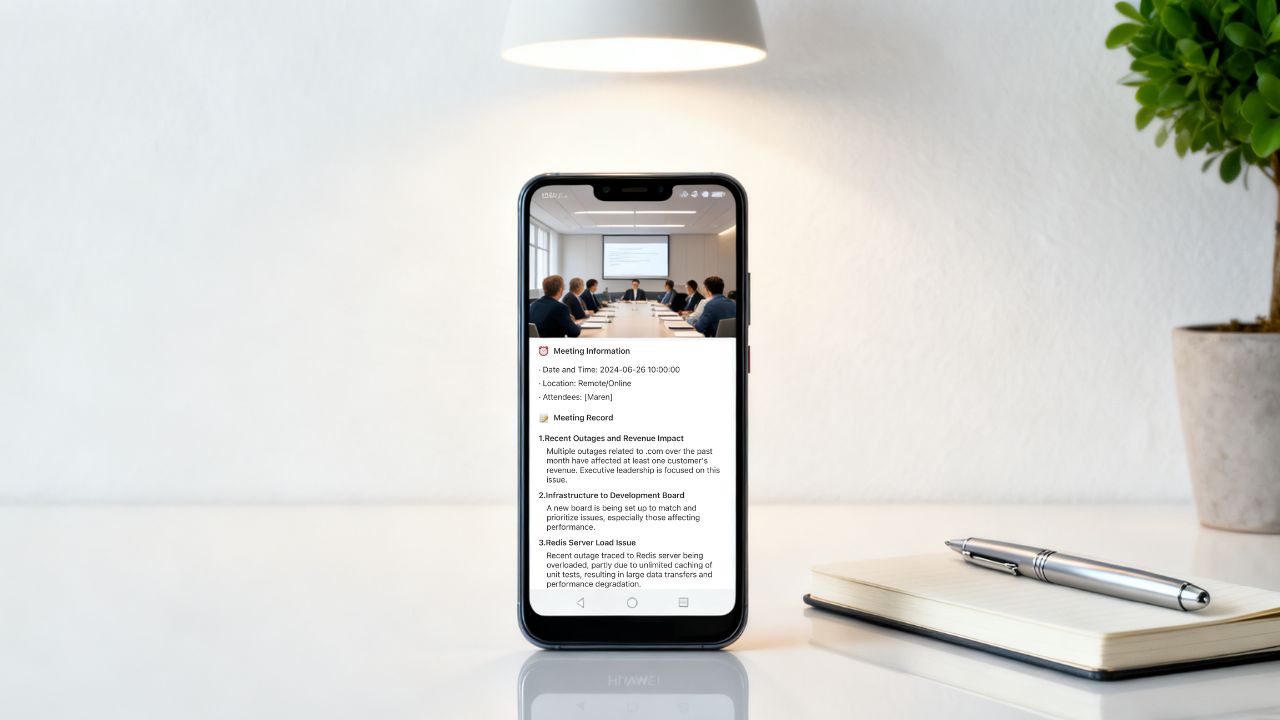In today’s fast-paced corporate environment, executives and managers spend a large portion of their day in meetings. While meetings are essential for alignment, decision-making, and strategy, they can also drain productivity when poorly managed. According to Harvard Business Review, executives spend nearly 23 hours per week in meetings, yet many fail to produce actionable results.
This is where AI tools for executives come in. They help improve meeting efficiency, enhance decision intelligence, and increase the ROI of meeting transcription.
The Hidden Cost of Inefficient Meetings
Inefficient meetings are more than frustrating—they cost organizations real money. Executives often spend hours taking notes, clarifying action items, and following up. When combined with salaries and overhead for multiple attendees, the total lost productivity can be staggering.
Poor meeting practices also affect decision quality. Missed points or unclear action items can delay decisions, lead to poor execution, or cause duplicated efforts. Inefficiency translates to lower ROI, slower project timelines, and frustrated teams.
Executives face additional challenges: multiple time zones, remote teams, and large cross-functional discussions. Traditional note-taking and post-meeting follow-ups often can’t scale to meet these demands.
How AI Tools Enhance Executive Productivity
AI-powered solutions are transforming how executives manage meetings. From real-time transcription to automated summaries and task extraction, AI ensures every meeting yields actionable outcomes.
Key benefits include:
Accurate Transcription: Captures every spoken word, even in multi-speaker settings, reducing miscommunication and forgotten action items.
Automated Summarization: Highlights key decisions, assigned tasks, and deadlines, saving hours of manual review.
Actionable Insights: Identifies patterns in meeting content, such as recurring bottlenecks, project delays, or stakeholder priorities.
Seamless Integration: Syncs with calendars, project management software, and CRM tools for smooth workflows.
By automating these tasks, executives can focus on high-value work like strategic decision-making and stakeholder management instead of administrative overhead.
ROI of Meeting Transcription
Investing in AI meeting transcription is more than a convenience—it drives measurable ROI.
Time Savings: Automated transcription reduces hours spent on note-taking, freeing executives and teams to focus on critical tasks.
Faster Decision-Making: Searchable, accurate transcripts accelerate consensus and reduce delays.
Accountability: AI-generated records create a clear trail of decisions and assigned responsibilities, improving follow-through.
Reduced Errors: Accurate records minimize misinterpretations or forgotten details, lowering the cost of mistakes.
For example, a multinational company using AI meeting transcription reported a 20% reduction in follow-up delays, translating into significant cost savings. The ROI of meeting transcription extends beyond productivity—it impacts revenue, project efficiency, and organizational alignment.
Decision Intelligence: Making Smarter Business Decisions
Decision intelligence is the use of data, insights, and structured frameworks to make better business decisions. AI transcription tools feed directly into this process by providing:
Data-Driven Insights: Identifying trends across meetings, highlighting recurring topics, and flagging pending decisions.
Improved Forecasting: Using historical transcripts to inform projections, resource allocation, and risk management.
Strategic Alignment: Consolidating meeting insights ensures teams operate with a unified understanding of priorities, reducing conflicts.
With AI-powered decision intelligence, executives make faster, smarter, and more informed choices, turning every meeting into a strategic asset.
Practical Tips to Improve Meeting Efficiency with AI
1.Pre-Meeting Preparation
Use AI assistants to create agenda templates based on past meetings.
Prioritize discussion points using AI-generated summaries of ongoing projects.
Schedule meetings strategically with AI calendar integrations to reduce conflicts.
2.During the Meeting
Enable live transcription to capture discussions accurately.
Use AI to highlight key decisions and log action items automatically.
Encourage participants to reference AI-generated summaries in real time to stay on track.
3.Post-Meeting Follow-Up
Distribute AI-generated transcripts and summaries immediately.
Assign tasks automatically with integrated AI task management features.
Analyze trends across multiple meetings to continuously optimize efficiency.
Choosing the Right AI Tools for Executives
Selecting the right tool depends on organizational needs, priorities, and security requirements. Consider:
Accuracy: Can the AI handle multiple speakers, accents, and noisy environments?
Integration: Does it sync with your CRM, project management, or communication platforms?
Security: Is data encrypted and compliant with privacy regulations?
ROI Potential: Will the tool save enough time and reduce errors to justify the investment?
Popular AI meeting transcription tools include Otter.ai, Fireflies.ai, and Notta.ai, each offering real-time transcription, AI-generated highlights, and workflow integration.
Conclusion
AI tools for executives are no longer optional—they’re essential for maximizing productivity, improving decision-making, and generating measurable ROI. By automating transcription, delivering actionable insights, and enhancing decision intelligence, these tools let executives focus on what truly matters: driving business growth.
For forward-thinking leaders, the question isn’t whether to adopt AI meeting transcription, but how quickly. Implementing the right tools today ensures meetings are strategic, time-efficient, and impactful, turning a common pain point into a competitive advantage.





